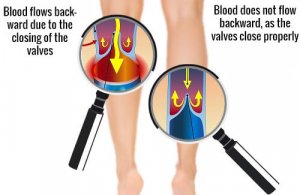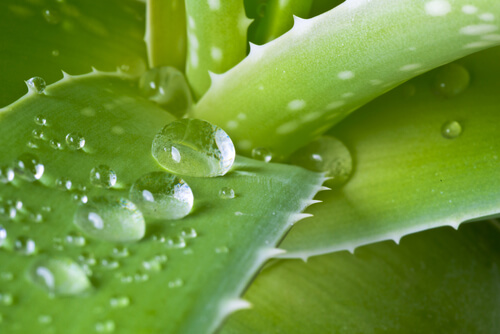How to Improve Arm and Leg Circulation


Written and verified by the doctor Nelton Abdon Ramos Rojas
If you’re used to having cold hands and feet, a constant tingling sensation in your extremities, needle-like pricking, numbness, or muscle cramps, it may be that you don’t have good arm and leg circulation.
This means that the cells and tissues in your extremities aren’t receiving enough blood, and therefore not enough oxygen or nutrients. Also, since blood carries out excess waste and toxins, you might be able to guess that this can be a major problem if it goes on for too long.
Symptoms of poor circulation
As we’ve mentioned, low temperature, feeling pricked as with needles, or simply tingling are the most commonly known symptoms of poor arm and leg circulation. Here are some others:
- Numbness in the arms and legs.
- Pain and cramps in the hands and feet.
- Swelling in the legs.
- Slow healing of sores on the hands and feet.
- Cracks on the hands and feet.
- Loss of feeling in the extremities.
- Migraines and headaches.
- Blue coloring in the fingers and nails.
- Appearance of varicose veins.
- Itching in the arms and legs.
- Gluteal and leg cramps.
- Loss of strength in the hands and feet.
- Difficulty walking.
- Dizziness upon standing up.
Possible causes of poor arm and leg circulation
There are tons of potential causes: slipped discs, muscle spasms from bad posture, inflammation, exposure to low temperatures, and many others. The first thing you should do is to seek medical attention. Once you’ve diagnosed the cause, then you can decide which natural alternatives to try.
Bad habits like alcohol abuse, having too much caffeine, taking drugs or strong medications, bad posture, nutritional deficiencies, and excessive stress, can cause circulation problems in your extremities.
There can be more serious causes too. We’re talking about things like obstruction of the peripheral arteries, arteriosclerosis, Raynaud’s phenomenon, coronary disease, heart arrhythmia, kidneyfailure, lung disease, diabetes, hypertension, or blood clots.
Improve your lifestyle

You shouldn’t combine treatments. Depending the doctor’s diagnosis and which medications they prescribe, you can make certain changes to your lifestyle. A healthier diet and home remedies do more than just alleviate the symptoms, they can also help you get better.
Smoking less, not drinking alcohol habitually, walking more, bicycling and generally exercising your arms and legs, swimming, and aquatics are all great activities.
Walking for 40 minutes is something most people can do, and it can lead to some amazing improvement for arm and leg circulation. It’s also good to wear loose clothing, especially when you’re sleeping, to avoid low temperatures.
Natural nutrition to improve arm and leg circulation
Vitamins
Eating foods rich in vitamin C stimulates your blood circulation. Here are some foods with a lot of vitamin C: citrus fruits like lemons, oranges, kiwis, grapefruits, and limes, along with other fruits like guavas, pomelos, strawberries, berries, and watermelon and melon. Tomatoes, spinach, green and red peppers, Brussel sprouts, and parsley are also rich in vitamin C.
Watermelon, tomatoes, and strawberries contain lycopene, which also stimulates blood circulation. Another indispensable vitamin for good circulation is vitamin E.
There are high concentrations of it in green, leafy vegetables like spinach and broccoli, and in brewer’s yeast and wheat germ. You can also get it from fruits and vegetables rich in potassium, like bananas.
Read more: Eat Bananas Daily. Learn Why Here!
Healthy fats
Foods rich in vitamin E and Omega 3 fatty acids include: sesame oil, walnut oil, palm oil, almond oil, and olive oil. But doctors recommend fruits for these things: olives, almonds, walnuts, hazelnuts, sesame seeds, and sunflower seeds. It’s also good to eat egg yolks, fresh-water fish, and take spirulina supplements to help improve your arm and leg circulation.
You should avoid rich in saturated fats like dairy products, such as butter, cream, lunchmeats, and pastries. The triglycerides and cholesterol in these foods thicken your blood, which has a very negative impact on circulation. Don’t have too much sodium either: it absorbs water and thins your blood.
Proteinases are a natural compound that can be very helpful for effectively reducing inflammation. One example is pineapple bromelain, a supplement you’ll find at just about any pharmacy. Then there are serrazimes, which come from fungi and have even more effects. It’s best to take 3 to 5 per day in between meals.
You might like: 5 Amazing Benefits of Eating Pineapple
Natural remedies to improve arm and leg circulation
Along with maintaining a healthy, natural diet, low in saturated fats and rich in vegetables, it’s good to include some home remedies shown to help improve circulation.
- Apply aloe juice to the affected regions. It’s also good to take three tablespoons of it a day, between meals.
- Use essential oils. Dilute lavender essential oil in almond or coconut oil and massage it into your legs, feet, arms, or hands.
- Herbal infusions. Yarrow or ginger tea, horsetail, mistletoe, passion flower, gingko, thyme, sage, and rosemary are great for stimulating circulation. Drink whatever you have at home.
- Eat one or two garlic cloves before breakfast, or add a lot to your diet. It increases blood flow and also removes plaque from your veins.
- Drink a litre of mineral water before breakfast. Drink it slowly, glass by glass, to improve circulation. You should also drink a lot of healthy liquids throughout the day.
Less known remedies
- Apply clay poultices in affected areas. This will help improve circulation, reduce swelling, and help deal with varicose veins.
- Soak feet and hands in hot water with pepper every night. This is an ancient remedy that helps stimulate circulation in your arms and legs.
- Soak hands and feet in ginger root. Mix a spoonful of ginger powder into two liters of hot water. Then submerge the affected parts of your body in the mixture.
- Pour a cup of fresh mint into a gallon of recently heated water. Then insert feet and soak for 15 minutes, drying them well after.
- A rosemary, elderberry, horsetail, burdock, and comfry bath. Add a fistful of these herbs into a big pot of boiling water, let stand for 30 minutes, and strain before adding to bath water. Bathe for 15 minutes and then wrap yourself in a towel for another 10.
- An onion bath. Boil two kilos of onion in 10 liters of broth. Then add the broth to the bathtub with warm water. Bathe yourself in it for ten minutes.
All of these traditional remedies are great for relieving symptoms. They’re also a great way to stimulate arm and leg circulation, which will improve circulation to the rest of the body too.
Go ahead and try them!
All cited sources were thoroughly reviewed by our team to ensure their quality, reliability, currency, and validity. The bibliography of this article was considered reliable and of academic or scientific accuracy.
- Secher, N. H., & Volianitis, S. (2006). Are the arms and legs in competition for cardiac output? In Medicine and Science in Sports and Exercise. https://doi.org/10.1249/01.mss.0000230343.64000.ac
- Proctor, D. N., & Newcomer, S. C. (2006). Is there a difference in vascular reactivity of the arms and legs? In Medicine and Science in Sports and Exercise. https://doi.org/10.1249/01.mss.0000230340.79247.52
- Vaile, J., O’Hagan, C., Stefanovic, B., Walker, M., Gill, N., & Askew, C. D. (2011). Effect of cold water immersion on repeated cycling performance and limb blood flow. British Journal of Sports Medicine. https://doi.org/10.1136/bjsm.2009.067272
This text is provided for informational purposes only and does not replace consultation with a professional. If in doubt, consult your specialist.








